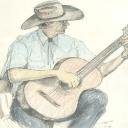Yahoo Answers is shutting down on May 4th, 2021 (Eastern Time) and beginning April 20th, 2021 (Eastern Time) the Yahoo Answers website will be in read-only mode. There will be no changes to other Yahoo properties or services, or your Yahoo account. You can find more information about the Yahoo Answers shutdown and how to download your data on this help page.
Trending News
bowen's reaction series?
on the bowen's reaction series, why is k-feldspar, muscovite, and quartz not on either side of the series (continuous or discontinuous) and what is the difference between the two sides? THANKS GUYS!
4 Answers
- Anonymous1 decade agoFavorite Answer
nice question grumpy face : ). Continuous refers to solid solution between anorthite and albitehttp://csmres.jmu.edu/geollab/Fichter/IgnRx/SolidS... The two sides would be seperate because of this, the non continous series is broken by the boundaries whereby the different minerals form. I would hazard a guess that k feld, muscovite and quartz are below the temperatures that either side form at and so a y shape is formed.
- SallyCLv 51 decade ago
A continuous series is one where the relative amount of one of the constituent elements in a mineral (solid solution) changes continuously with changing temperature: The classic example of this is the plagioclase feldspars, where the Ca to Na ratio is a function of the the temperature of crystallisation, and as the temperature of crystallisation changes so will this ratio.
In a discontinuous series, one mineral substitutes for another with changing conditions, so that pyroxene will be substituted by amphibole and so on. Kfelspar, muscovite and quartz are 'late crystallising phases' and not part of the reaction series.
Source(s): http://www3.interscience.wiley.com:8100/legacy/col... http://www.britannica.com/EBchecked/topic/282318/i... - AmphiboliteLv 71 decade ago
The Continuous Series are plagioclase feldspars while the Discontinuous Series are mafic (magnesium and iron) minerals. Bowen's Reaction Series is a (very) simplified representation of common rock-forming minerals. As such, it is weighted towards granites, andesites and basalts. At low temperatures, there are miscibility gaps in plagioclase feldspars, which means it is not continuous at low temperatures. At high temperatures, sanidine (K-feldspar) has 100% solid solution with high albite (the high temperature form of albite), so K-spar becomes continuous with the sodium end of the plagioclase feldspars.
Quartz is excess silica, and Bowen's Reaction Series does not include high temperature polymorphs of quartz such as tridimite or crystobalite, which are in tonalites.
Muscovite forms at low temperatures, and is not a mafic mineral nor a feldspar (K-spar or Plag).
Source(s): Mineralogy class and Petrology class



